In our busy and digital-driven world, many children have little opportunity to engage in everyday play in nature.
Recent research has also illustrated that technology is significantly affecting how children think and focus their attention, with some screen-based games significantly restricting the use of imagination and creativity.
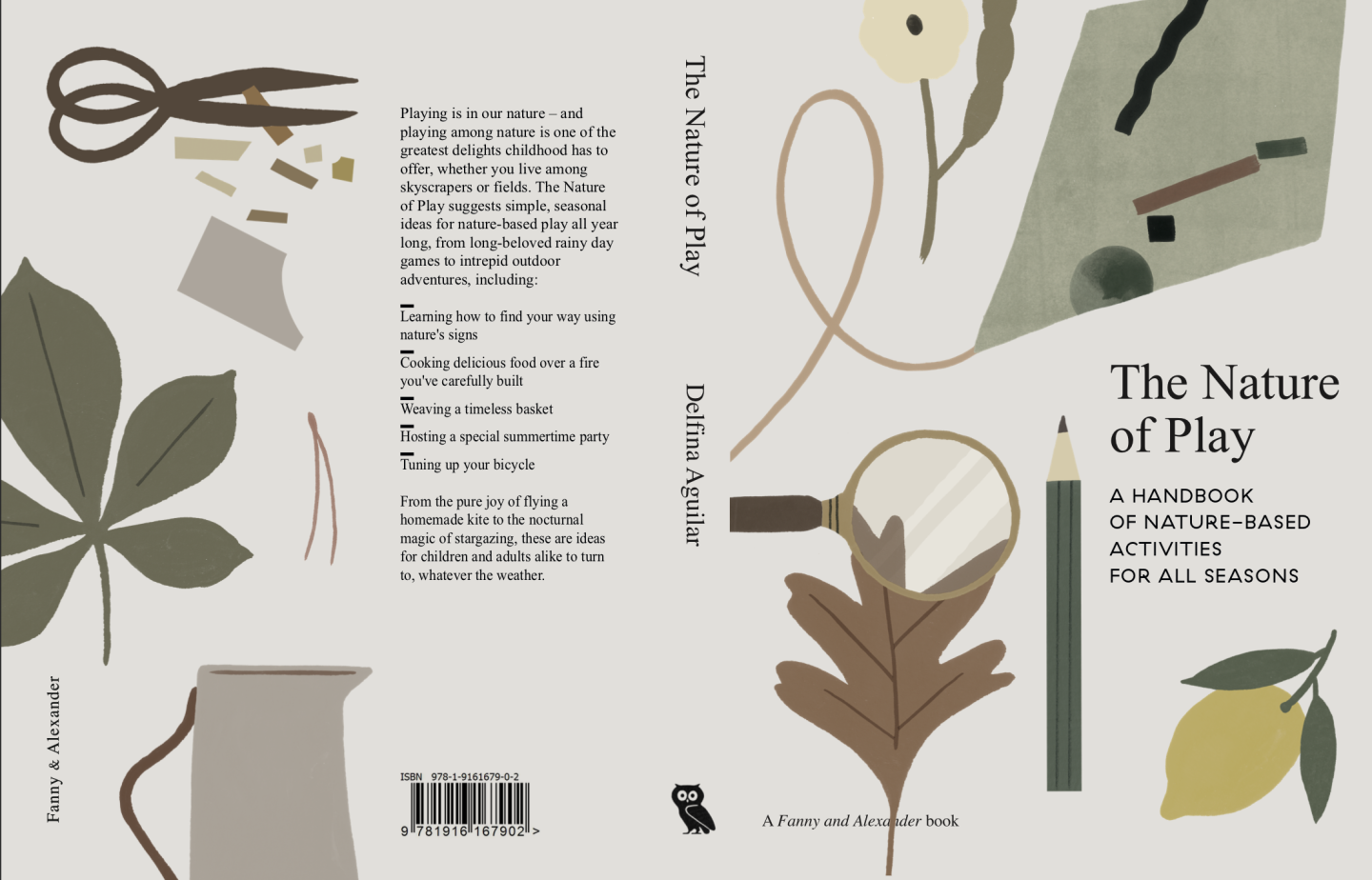
The Nature of Play: A Handbook of Nature-Based Activities for all Seasons offers a remedy to this dilemma. The book features 44 play activities for children and adults in gardens, forests and city parks throughout the four seasons.
For example, the Spring section of the book features activities such as ‘Get to know a tree’ and ‘plan a picnic.’ The Winter section then offers more indoor play prompts such as ‘build your own marble run’ and ‘rainy day games.’ Other activities include:
- Make your own pinhole camera using a recycled Pringles tube
- Creative a beautiful seasonal mobile using objects collected from nature
- Construct a sand volcano at the beach using twigs, scrap newspaper, matches and (of course) sand!
The Philosophy behind The Nature of Play
The handbook has been created by Delfina Aguilar who is the founder of Fanny & Alexander, a company that creates analogue children’s toys that promote creativity and curiosity. Delfina explains:
“Childhood is a brief and extraordinary time — a time when everything is possible and the imagination is boundless. Fanny & Alexander is dedicated to creating and cultivating moments of joy during childhood that will last a lifetime.”
During the process of creating the handbook, Delfina was inspired to create a play resource that required children to challenge themselves, solve unexpected problems and use their imagination to interact with the world.
Flicking through the book, I immediately fell in love with the dainty illustrations by Sabrina Arnault. Beautifully presented and sticking to a chic colour palette of greens, browns and mustard, every page is an aesthetic delight.
The activities have also been put together using simple materials such as paper, envelopes, fishing line and pencils. As these are resources that families have around the house, there is no need to go out and buy expensive things!
To put The Nature of Play to the test, I thought I would try out a couple of the activities myself… because why do kids get to have all the fun!
Creating a seasonal mobile
My first activity was to create a mobile using natural materials, string and an embroidery hoop. There were four key steps to make it. Firstly, collecting bits and pieces from the garden, tying them to the embroidery hoop, hanging the mobile and finally re-making the mobile with new objects as the seasons change. Easy! And fun.
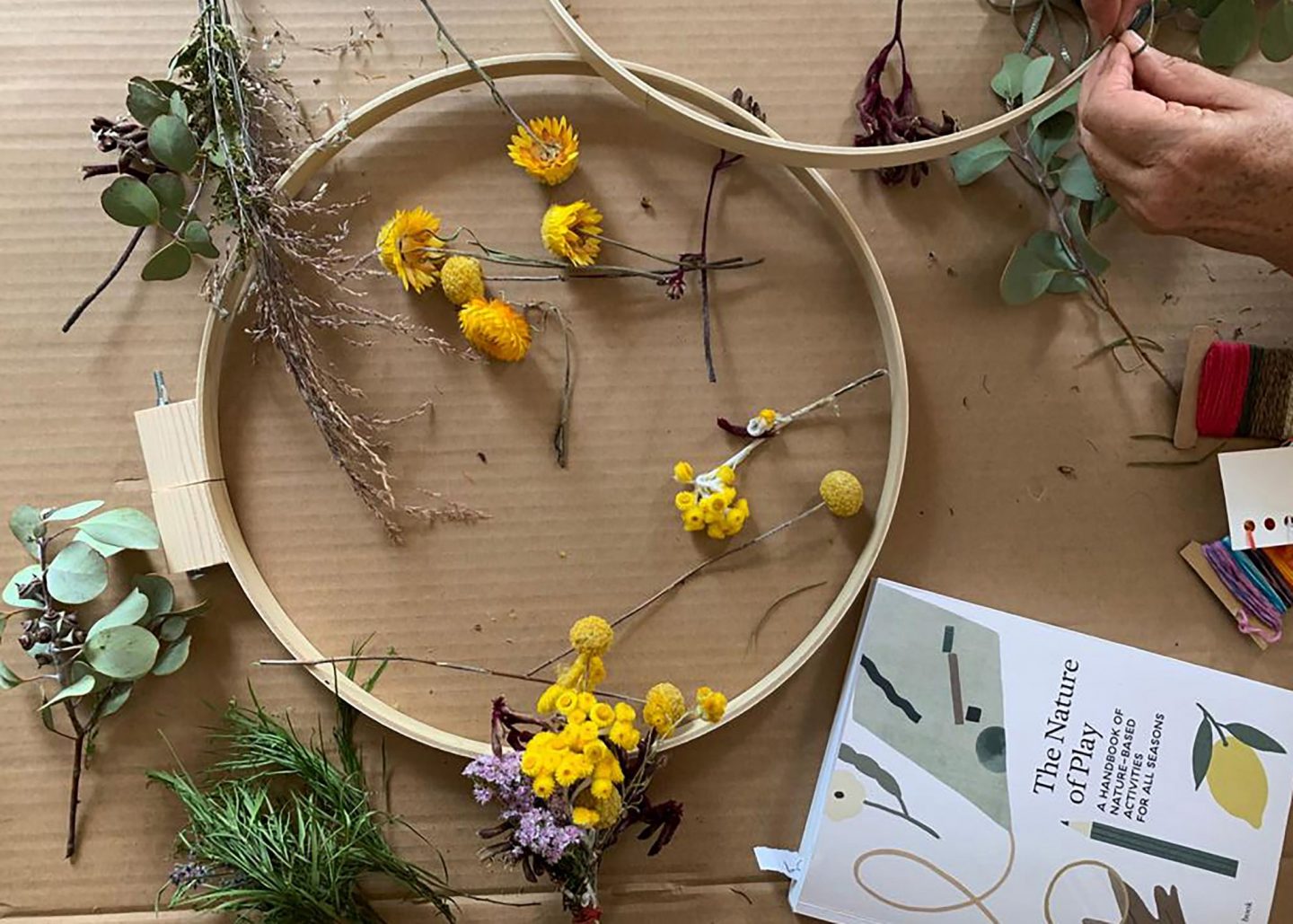
The activity instructions included a section on the creative history of mobiles. For example, how artists such as Man Ray, Bruno Munari and Alexander Calder have all dedicated years of their life to creating them. Additional info was also given on the philosophy and educational purpose underpinning the activity. For example, “Mobiles have a kind of magic to them; watching them gently turning is a meditative act for children and adults alike. Their construction requires fine motor skills, patience, perseverance and imagination…” As an educator, I really appreciated this!
While making the mobile, children would also be able to explore concepts such as balance, measurement and gravity through the positioning of the natural objects around the hoop. I think it is important for parents to see the pedagogical basis behind kids art activities such as this!
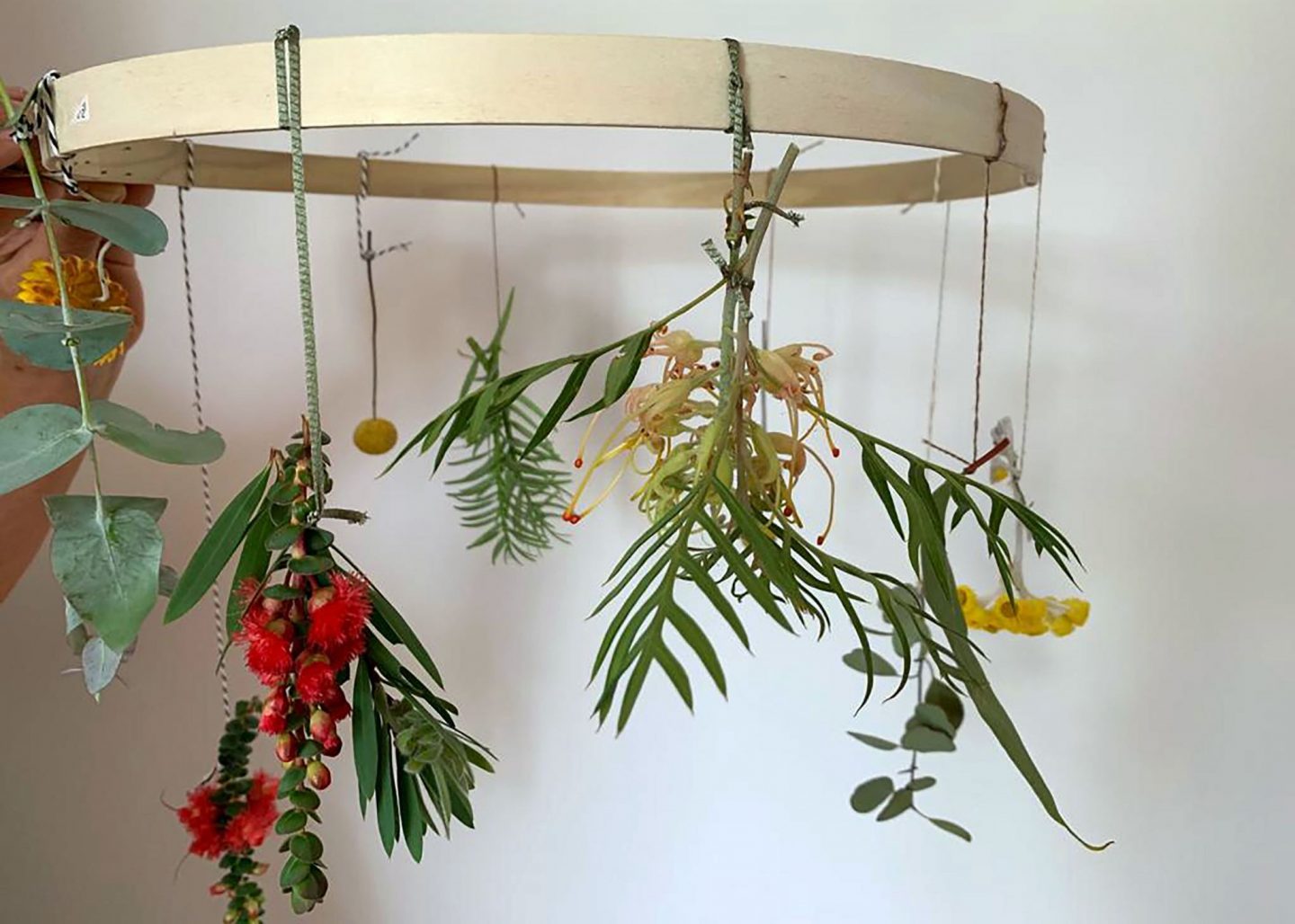
While making my mobile, I loved how the activity made me focus on the colour, texture and shapes of the flora. The selecting, tying and arranging of the objects also constantly drew my attention to the visual characteristics of the flowers and leaves. I used an embroidery hoop with a 30cm diameter, creating quite a large artwork. Overall, I was very satisfied with my final mobile!
Make your own wrapping paper
The second activity I got my teeth into was decorating my own wrapping paper. I first gathered the bits I needed including a roll of butcher’s paper, a potato, acrylic paint and a craft knife. I then sliced the potato in half, drew a shape on it (a Christmas tree and a start) and cut it out using the craft knife. Finally, I was able to apply the acrylic paint to stamp my pattern on the paper!
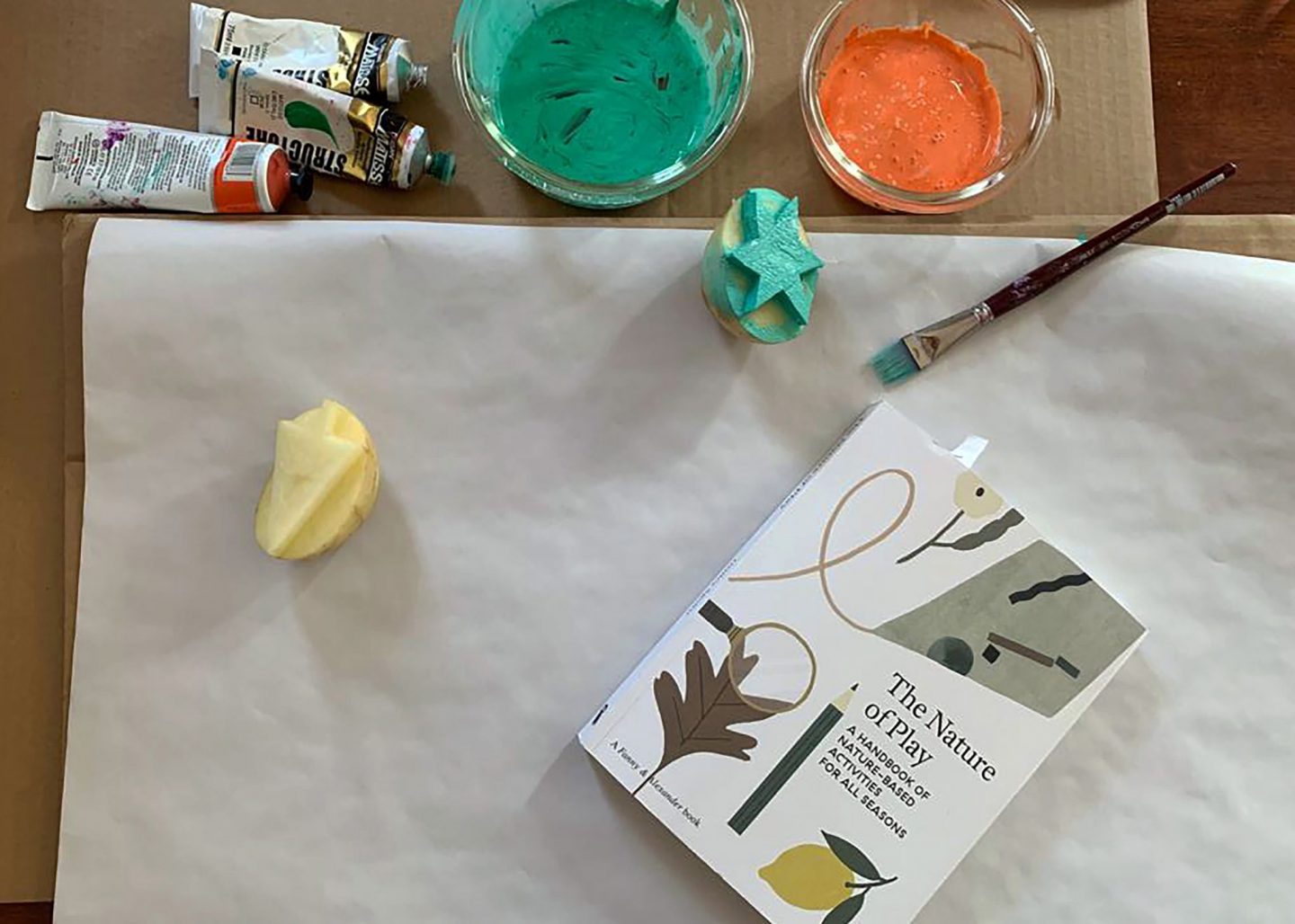
I enjoyed being able to use my stamps to create a large-scale design at a quick pace. It did take me a few goes to get the right pressure needed to make the print come out on the paper. However, for the little ones, this process of trial and error would support the developing of fine and gross motor skills through problem-solving.
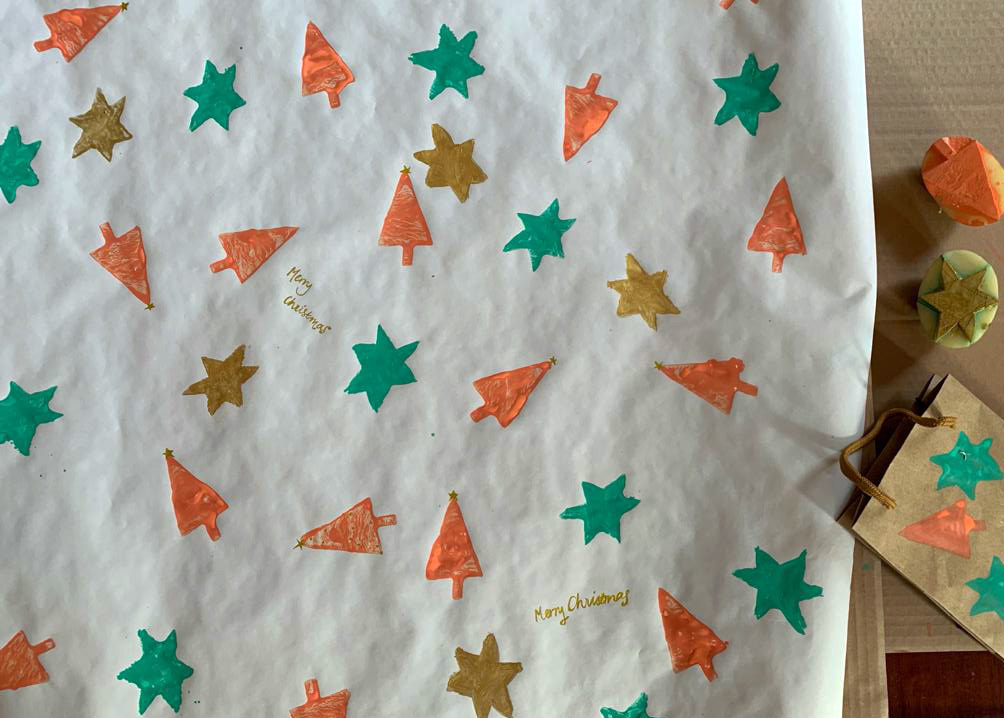
Christmas is a time for mass consumerism and I liked being able to make something by hand. I must admit that it was my first time doing potato printing in about 28 years so am looking forward to refining my skills in the future! I am thinking that the simpler the shape, the better the results.
Overall, I loved the philosophy and creative simplicity that underpins The Nature of Play. The book signified a return to everyday childhood activities that are simple yet full of wonder, imagination and creative potential. I would highly recommend it for children over the age of five and their families!
You can purchase ‘The Nature of Play’ from the Fanny & Alexander website where you can also sign up to their soon-to-launch newsletter.
Fanny and Alexander also run workshops for children and families (with heir recent collaborations including both Apple and the Liberties department store in London.
You can follow them on Instagram @fannyandalexander
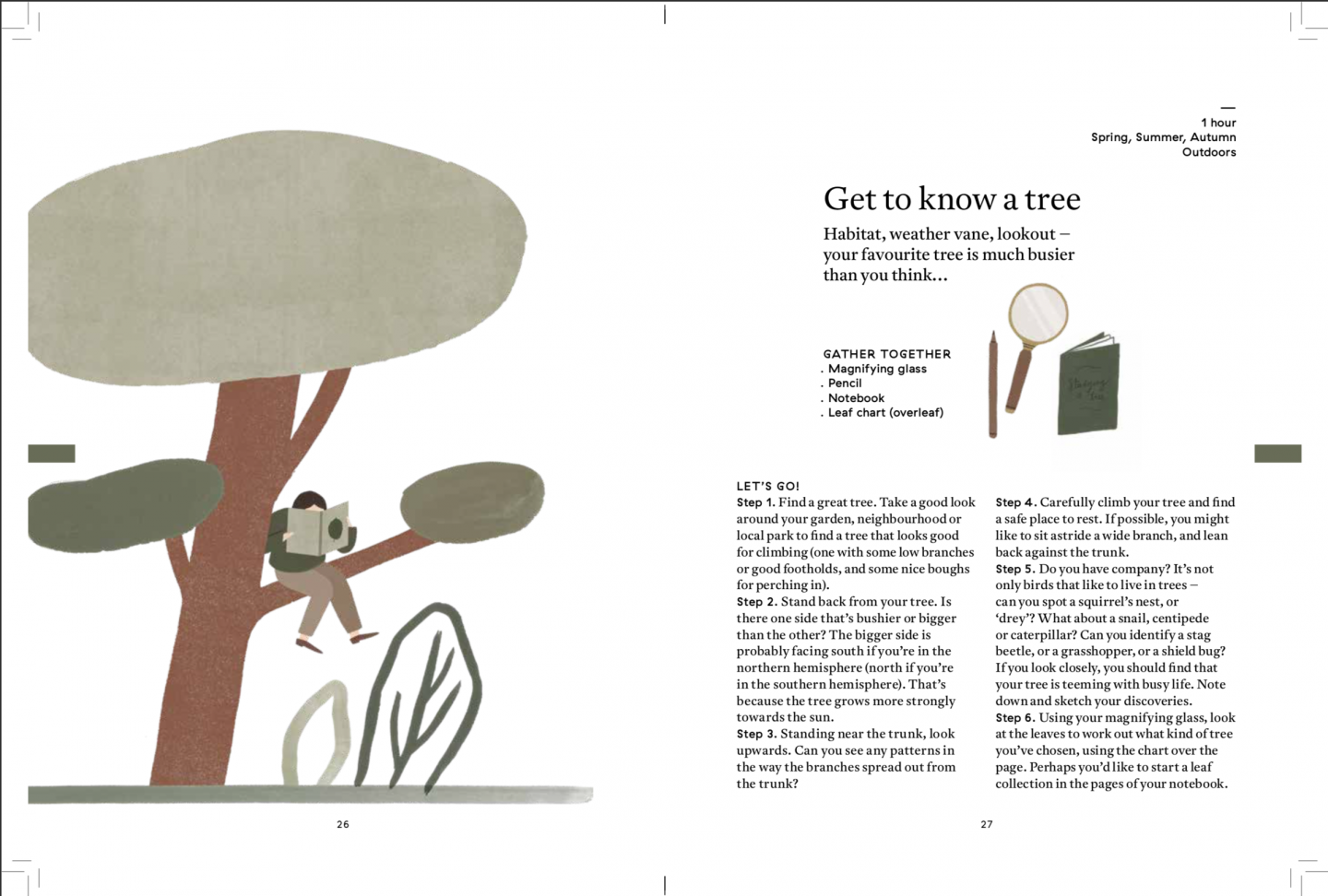
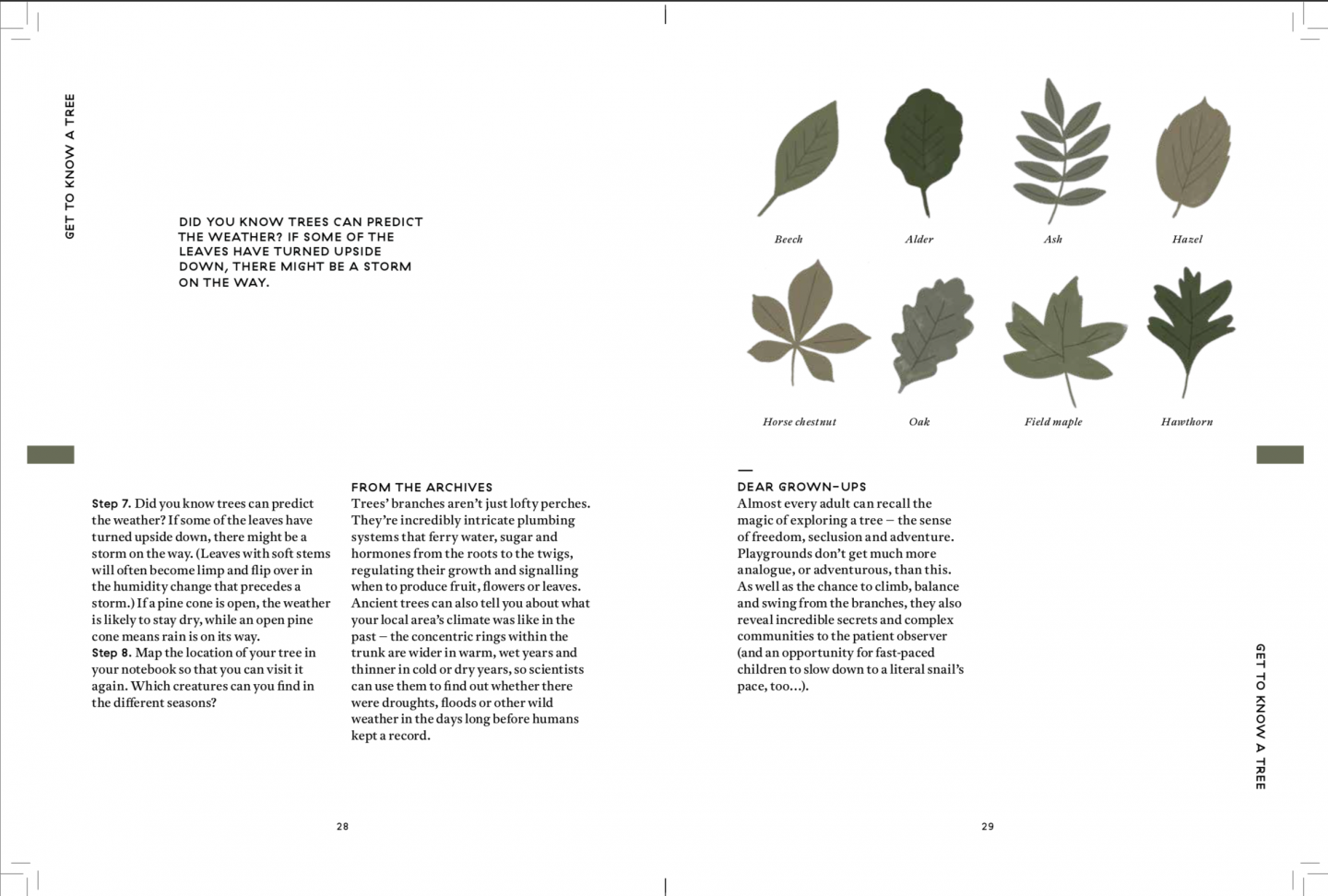
Related Posts to The Nature of Play
The importance of woodwork in the early years
Children’s tactile learning in a giant crochet sculpture
Bruno Munari: “inventor, artist, writer designer, architect, illustrator and player-with-children”
Did you try making the seed balls? I’m wondering what kind of clay is to be used for them.
Author
I have not done the seed ball activity but just had a look at it in the book – I would use air dry clay, just a cheap brand from an art shop will do!